
The Archdiocese of Benevento is a Latin archdiocese of the Catholic Church. It currently has five suffragan dioceses: the diocese of Ariano Irpino-Lacedonia, the diocese of Avellino, the diocese of Cerreto Sannita-Telese-Sant'Agata de' Goti, the Territorial Abbey of Montevergine, and the archdiocese of Sant'Angelo dei Lombardi-Conza-Nusco-Bisaccia.
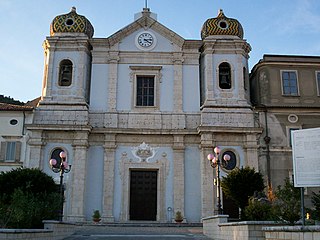
The Diocese of Cerreto Sannita-Telese-Sant'Agata de' Goti is a Latin diocese of the Catholic Church in Campania, Italy, has existed since 1986, when the Diocese of Sant'Agata de' Goti was suppressed, and its territory and Catholic population united to the Diocese of Telese-Cerreto Sannita. The diocese is a suffragan of the Archdiocese of Benevento.

The Diocese of Bovino is a Latin Church diocese of the Catholic Church in the civil province of Apulia, southern Italy. It is 23 mi (37 km) southwest of Foggia. It was established in the tenth century, and was a suffragan of the archdiocese of Benevento. In 1986 it was merged into the Archdiocese of Foggia-Bovino. In 1980, the diocese claimed 23,500 adherents, served by 26 priests.

The Diocese of Nocera Umbra was a Catholic diocese in Umbria, Italy.
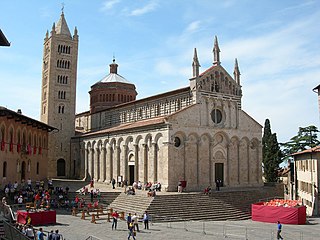
The Diocese of Massa Marittima-Piombino is a Latin Church diocese of the Catholic Church in Tuscany, central Italy. It was known as Diocese of Massa Marittima before 1978. Up until 1458, it was a suffragan of the archdiocese of Pisa; since 1458, it has been a suffragan of the Archdiocese of Siena. The territory of the diocese includes the islands of Elba and Pianosa, and Capraia.

The Diocese of Avellino is a Latin diocese of the Catholic Church in the territory of the Irpini, some 55 km (30 mi) east of Naples and 23 km (14 mi) south of Benevento, in the modern Republic of Italy. It is suffragan to the archdiocese of Benevento. The bishop of Avellino, along with the bishop of S. Agata de' Goti, had the privilege, recognized at the provincial synod of 1654, of being summoned to attend upon the death and obsequies of the archbishop of Benevento.
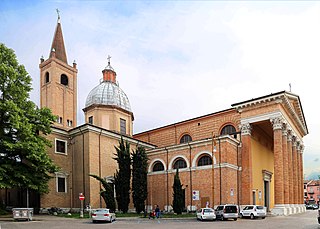
The Diocese of Forlì-Bertinoro is a Latin diocese of the Catholic Church in Romagna, Italy. Until 1986 it was known as the Diocese of Forlì, in existence perhaps from the fourth century. In that year the Diocese of Bertinoro was united to it. The diocese is suffragan to the Archdiocese of Ravenna-Cervia.

The Archdiocese of Ferrara-Comacchio is a Latin Church archdiocese of the Catholic Church. It has existed since 1986, when the diocese of Comacchio was combined with the historical archdiocese of Ferrara. It is a suffragan of the archdiocese of Bologna.
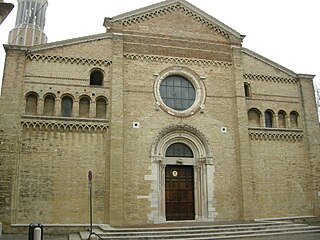
The Diocese of Fano-Fossombrone-Cagli-Pergola is a Latin diocese of the Catholic Church in Italy, created in 1986, when the historical Diocese of Fano was united to the Diocese of Cagli e Pergola and the Diocese of Fossombrone. It is a suffragan of the Archdiocese of Pesaro.
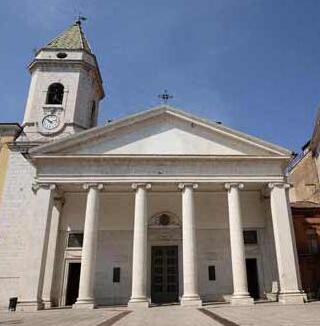
The Archdiocese of Campobasso-Boiano is a Latin Church archdiocese of the Catholic Church in the commune of Campobasso, the capital of the province of Campobasso, in the region of Molise in Southern Italy. It became an archdiocese in 1973 and a metropolitan see in 1976.

The Catholic diocese of Larino is located in the province of Campobasso, Southern Italy, c. 18 mi. south of Termoli. It existed from the 7th century until 1986. In that year it was united into the diocese of Termoli-Larino. It was a suffragan of the archdiocese of Benevento.
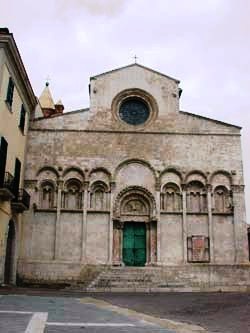
The Diocese of Termoli-Larino is a Latin Church diocese of the Catholic Church situated in the province of Campobasso, region of Molise. The commune of Termoli is an important regional seaport. The diocese has existed in its current configuration since 1986, when the diocese of Larino was suppressed and added to its territory. It is a suffragan of the archdiocese of Campobasso-Boiano.

The Diocese of San Severo is a Latin diocese of the Catholic Church in Apulia. It is a suffragan of the Archdiocese of Foggia-Bovino.
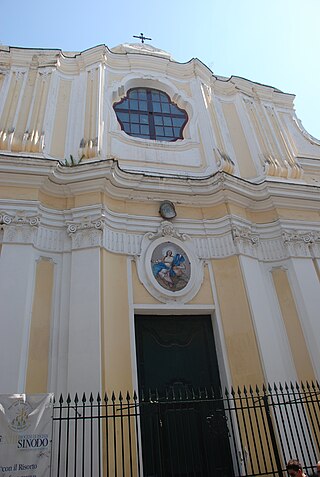
The Diocese of Ischia is a Latin diocese of the Catholic Church in Campania, southern Italy. It is a suffragan of the Archdiocese of Naples. The diocese comprises the entire island of Ischia, which contains seven communes divided into two circumscriptions. In 1743, the population was about 4,000. The city of Ischia constituted one single parish, with two religious houses of men and one of women. In 2018, the population of the town of Ischia was 20,118.

The Diocese of Caserta is a Latin diocese of the Catholic Church in Campania, southern Italy. It is a suffragan of the Archdiocese of Naples. In 1818 Pope Pius VII united this see with the diocese of Caiazzo, but Pope Pius IX made them separate sees. In 2013 in the diocese of Caserta there was one priest for every 1,703 Catholics; in 2016, there was one priest for every 2,008 Catholics. The diocesan Major Seminary currently (2019) has four seminarians.

The Archdiocese of Sorrento-Castellammare di Stabia is a Latin archdiocese of the Catholic Church in Campania, has existed in its current form since 1986. It is a suffragan of the Archdiocese of Naples, having lost its status as a metropolitan in 1979. The Diocese of Castellammare di Stabia was suppressed, and its territory united with the Archdiocese of Sorrento, in 1986. In 2014, in the diocese of Sorrento there was one priest for every 1,503 Catholics.
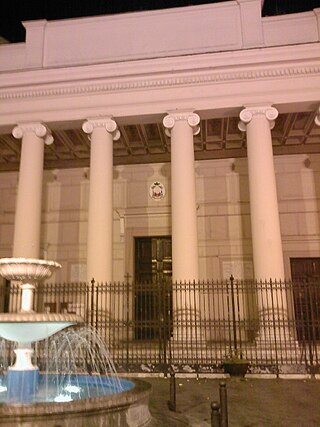
The Diocese of Acerra is a Latin diocese of the Catholic Church in Campania, southern Italy, eight miles east of Naples, in the area once called Terra Laboris (Liburia). It has existed since the 11th century. It is a suffragan of the Archdiocese of Naples.

The Archdiocese of Catanzaro-Squillace is a Latin Church diocese of the Catholic Church in Calabria, has existed in its current form since 1986. In that year the Archdiocese of Catanzaro became a metropolitan see, and was combined with the diocese of Squillace.
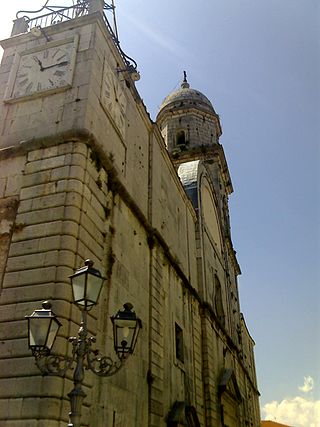
Diocese of Nusco was a Roman Catholic ecclesiastical territory in Campania, southern Italy, and was a suffragan of the archdiocese of Salerno. In 1986 the diocese was suppressed, and its territory was united with the archdiocese of Conza-Sant'Angelo dei Lombardi-Bisaccia, to form the Archdiocese of Conza-Sant'Angelo dei Lombardi-Nusco-Bisaccia.

The Diocese of Guardialfiera or Diocese of Guardia was a Roman Catholic diocese in Italy. The diocese was established in the second half of the 11th century, with seat of the diocese was located in the city of Guardialfiera in the Province of Campobasso in the region of Molise. In 1818, the diocese was suppressed, and its ecclesiastical territory was assigned to the Diocese of Termoli.





















